The Riprap Calculator uses the Maynord equation to compute riprap size. The Maynord equation computes the 30th percentile rock size that should remain stable at the design velocity on the channel bed and on the side slope. Because of the gravitational component, the stable rock size on the side slope will be larger than the bed.
Computing Side Slope Velocity (Vss) and Depth (Dss)
The Riprap Calculator uses the average channel velocity (V) and the hydraulic depth (D) from the upstream reference cross section to compute the riprap size on the channel bed. Then it computes modified side slope velocities (Vss) and depth (Dss) from V and D to compute the stable d30 on the side slopes.
The Maynord equation computes the side slope velocity and depth based on a point located 20% of the length up the slope from the toe along an idealized wetted bank (based on the user entered side slope). 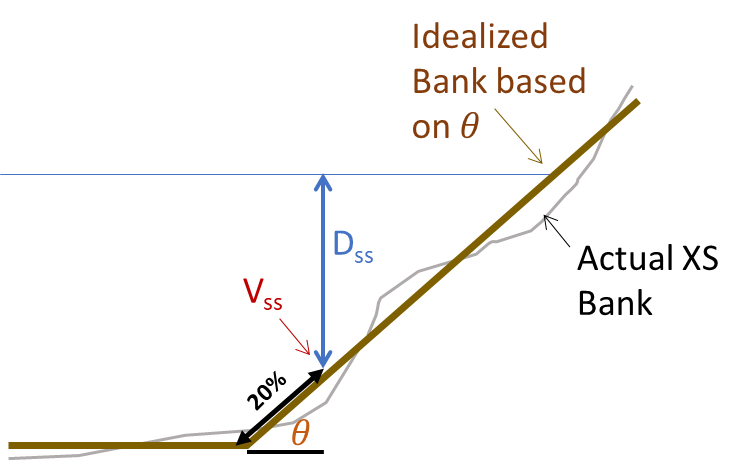 The riprap calculator computes Dss with simple trigonometry (see next section).
The riprap calculator computes Dss with simple trigonometry (see next section).
Vss Calculation
Computing the velocity at this critical side slope location (Vss), from the 1D, channel-averaged velocity is not intuitive. EM 1110-2-1601 includes two empirical equations, based on measurements at this side slope location, from the Riprap Test Facility. The riprap calculator determines which equation to use based on whether the user selects Natural or Trapezoidal channel: The Riprap Calculator uses the following relationships to compute the ratio of the side slope velocity to the average channel velocity (Vss/Vavg). Because the side slope velocity (Vss) is assumed to be at the outside of the bend, the side slope velocity should be greater than or equal to the average velocity (Vss≥Vavg). Therefore, when the logarithmic Vss/Vavg relationships drop below 1, the Riprap Calculator sets Vss=Vavg.
The Riprap Calculator uses the following relationships to compute the ratio of the side slope velocity to the average channel velocity (Vss/Vavg). Because the side slope velocity (Vss) is assumed to be at the outside of the bend, the side slope velocity should be greater than or equal to the average velocity (Vss≥Vavg). Therefore, when the logarithmic Vss/Vavg relationships drop below 1, the Riprap Calculator sets Vss=Vavg.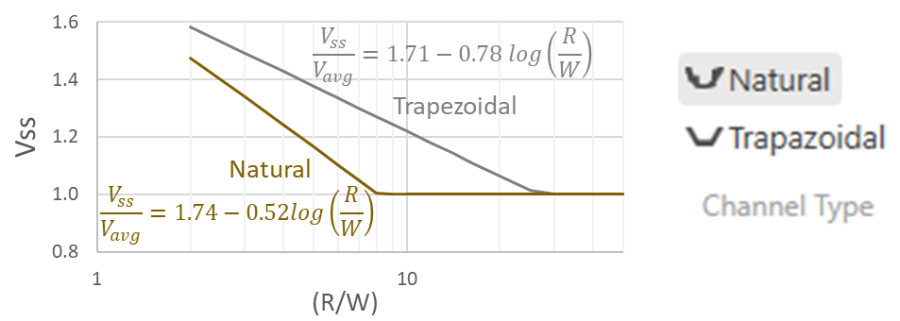
Dss Calculation
The Riprap Calculator computes the depth 20% up the idealized side slope with simple trigonometry based on the side slope angle and the depth in the main channel: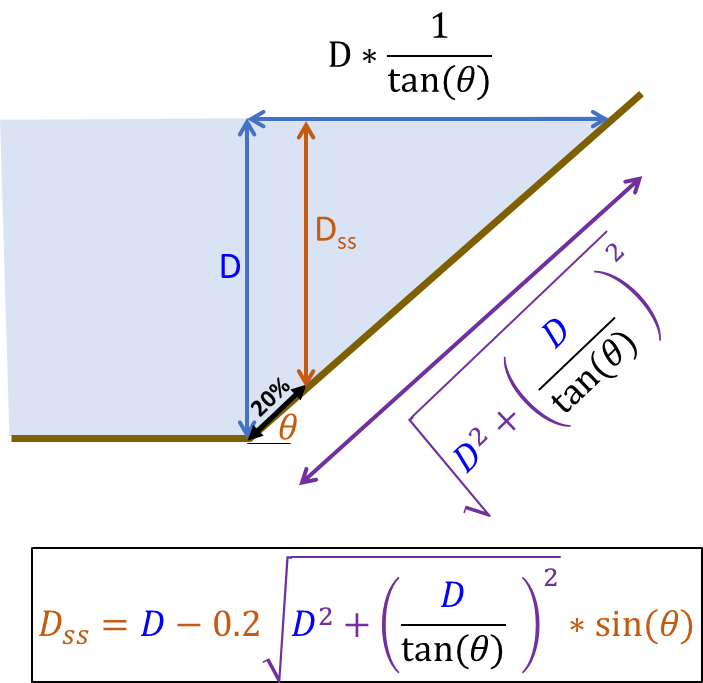 This equation can also be formulated in terms of a V:H slope:
This equation can also be formulated in terms of a V:H slope: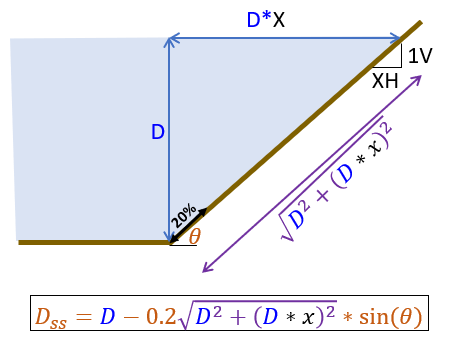
The Maynord Equation
USACE guidance uses the Maynord equation to compute the minimum riprap size. This equation computes the 30th percentile grain size of the recommended rock gradation. The Maynord equation is: Where:
Where:
SF = Safety Factor (USACE recommended = 1.1)
Cs = Stability coefficient for incipient failure (0.3-0.375)
Cv = Vertical velocity distribution coefficient (≥1.0)
D = Depth (either Davg for bed or Dss for side slope) (ft, m)
V = Velocity (either Vavg for bed or Vss for side slope) (ft/s, m/s)
gw = Unit Weight of Water (lb/ft3, kg/m3)
gs = Unit Weight of solids (lb/ft3, kg/m3)
g = Gravitational constant (ft/s2, m/s2)
d30 = 30th percentile of recommended riprap gradation (computed in ft, reported in in, mm)
The Riprap Calculator applies this equation in the bed and banks, applying the appropriate depths (D) and velocities (V) in each equation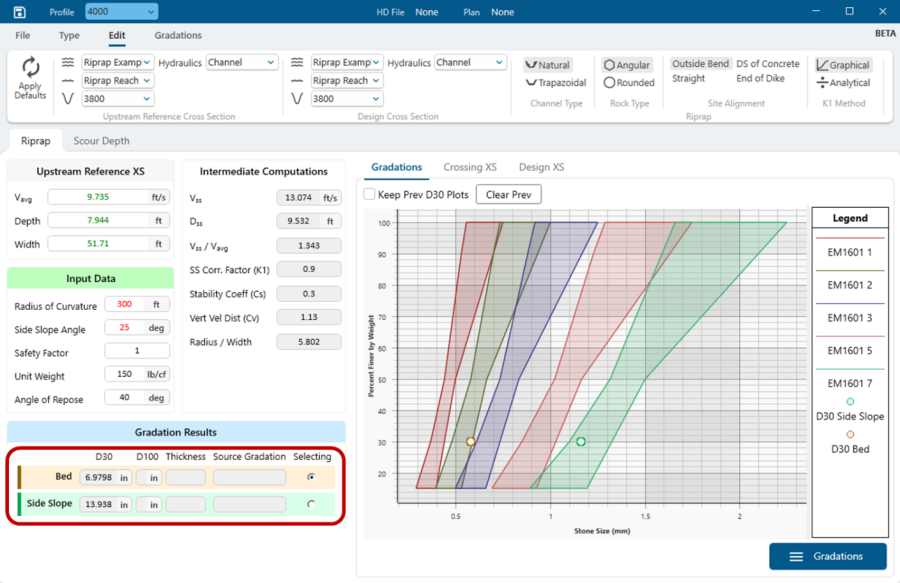 The calculator uses the hydraulic depth (Depth) and the average velocity (Vavg) to compute the d30(Bed) in the bed. It uses the side slope velocity (Vss) and side slope (Dss) depth (computed 20% up the bank slope) for the side slope d30(SS).
The calculator uses the hydraulic depth (Depth) and the average velocity (Vavg) to compute the d30(Bed) in the bed. It uses the side slope velocity (Vss) and side slope (Dss) depth (computed 20% up the bank slope) for the side slope d30(SS).
Note:
The Maynord equation and EM 1110-2-1601 also include a thickness coefficient CT. But CT=1 for the recommended thicknesses of Max(1.0d100 or 1.5 d50) which is the reported thickness in the Riprap Calculator. Therefore, the interface and documentation do not include this coefficient.